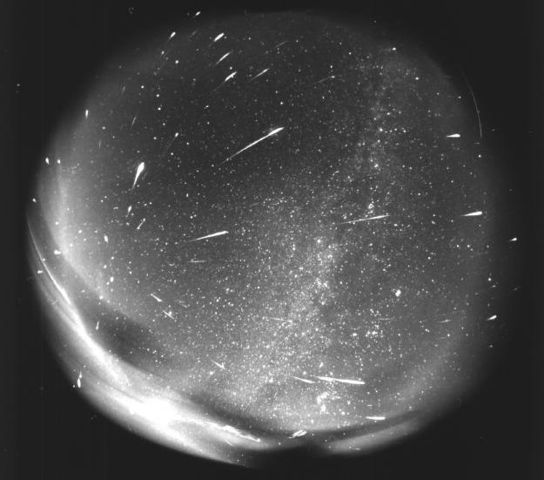Meteor showers are captivating celestial events that occur when Earth passes through the debris left behind by a comet, resulting in a display of shooting stars or meteors streaking across the night sky. Here’s everything you need to know to have an unforgettable experience during a meteor shower:
1. Meteor Shower Basics:
- Definition: A meteor shower is a natural event in which numerous meteors, or “shooting stars,” are visible in the night sky over a relatively short period.
- Meteoroids: Meteors are caused by small celestial objects known as meteoroids entering Earth’s atmosphere and burning up due to friction.
- Comet Debris: Most meteor showers are associated with the debris left behind by comets as they orbit the Sun. When Earth intersects this debris, the particles burn up, creating meteors.

2. Best Viewing Times:
- Know the Schedule: Meteor showers occur on specific dates each year when Earth passes through the debris trail of a particular comet. Find out when the next meteor shower will take place.
- Moon Phase: Plan your meteor shower viewing on a night with little to no moonlight. A dark sky allows for the best visibility of meteors.
- Avoid Light Pollution: Choose a viewing location away from city lights to minimize light pollution and enhance your meteor shower experience.
3. Equipment and Preparation:
- No Equipment Needed: You don’t need telescopes or binoculars to enjoy a meteor shower. In fact, using such equipment may limit your field of view.
- Comfort: Dress warmly, as meteor shower viewing can be chilly, especially during the night. Bring blankets or lounge chairs for comfort.
- Bug Spray: In some locations, especially during warmer months, insects can be a nuisance. Consider using bug spray.
4. Observing Techniques:
- Lay Back: Lie flat on your back and look up at the entire sky, not just one specific area. Meteors can appear anywhere in the sky.
- Patience: Be patient and give your eyes time to adjust to the darkness. It can take up to 20 minutes for your eyes to adapt fully.
- Record Observations: Consider keeping a log of meteor sightings, including the time, location, and direction of each meteor.
5. Meteor Shower Etiquette:
- Minimize Light: Avoid using flashlights and cell phones with bright screens during the shower. If you need light, use a red flashlight or cover a white flashlight with red cellophane to preserve your night vision.
- Share the Experience: Invite friends or family to join you, as meteor showers are more enjoyable when shared.
6. Popular Meteor Showers:
- Some of the well-known meteor showers include the Perseids (August), Geminids (December), and the Quadrantids (January). Research the specific dates and peak times for each shower.
7. Unexpected Events:
- Occasionally, meteor showers can produce outbursts with significantly more meteors than expected. Keep an eye on meteor shower forecasts and news for such events.
8. Photographing Meteor Showers:
- Capturing meteors in photographs can be challenging but rewarding. Use a tripod, a wide-angle lens, and long exposures. Experiment with camera settings and take multiple shots.
9. Safety First:
- Be aware of your surroundings and watch out for potential hazards, such as uneven terrain or wildlife, while looking up at the sky.
Watching a meteor shower can be a magical experience, connecting you with the vastness of the universe. With a little preparation and patience, you can have an unforgettable night under the stars during a meteor shower.










